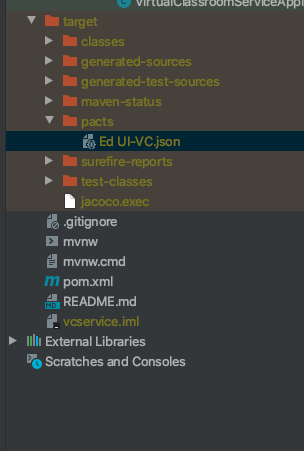
Do Students Have a Fixed Mindset or Growth Mindset? The Answer Is Both
by Rachel Schechter with Jessica McKeown
This article is part of a learning science myth series, with content originally published on Shaped. See the other pieces from the series here.
I remember first hearing the term growth mindset when I was a preschool teacher. I was relatively new to working with young children and reveled in the idea that my words could impact my students’ beliefs about their own intelligence. Remembering back to when I was a child, my mother would say things like my sister was “smart” and that I “worked hard” — which confused me. After all, my sister worked hard too, and wasn’t I smart? The dichotomous nature of growth mindset has become a bit of a myth. It’s not that we either have a fixed or growth mindset as a long-term condition, but that context plays a part in whether we feel powerless, or empowered, to grow and learn.
In her 2006 book Mindset: The New Psychology of Success, Carol Dweck explains that mindsets shape an individual’s interpretations of events. Some learners assume they are either inherently “smart,” or not. Understanding the differences between growth and fixed mindsets and how to nurture them can help educators have a greater impact on student outcomes. Over the past 14 years, schools have been taking Dweck’s work and applying it in programs, interventions, and professional learning. What do we now know about how a fixed or growth mindset impacts learning? Here are key findings:
- Students experiencing a growth mindset seek out opportunities to learn, develop effective learning strategies, and assess their own weaknesses to work on them
- Growth mindsets are context-specific and don’t always transfer to different domains
- Interventions should be targeted towards lower-performing students for best results; some students who are academically high-performing have positive fixed views of their intelligence

How are growth mindsets misunderstood?
Mindsets are tied to content or contexts and are not identity-based, meaning a person’s mindset depends on the situation and not on inherent ability. For instance, students may feel that with effort they can improve in social studies, but that they are “just not good at” science. Similarly, different types of activities, like public speaking, or environments that are intimidating to some students, like a competitive classroom, may stir feelings of inadequacy even if students adopt a growth mindset in these situations.
Why are schools implementing growth mindset interventions?
Interventions targeting mindsets can have substantial positive effects on outcomes, including academic assessments. Adoption of a growth mindset can mitigate the negative effects on achievement of variables outside students’ control, including poverty and the transition to middle or high school. A recent intervention study led by North Carolina State University associate professor of psychology Jeni Burnette found that positive learning outcomes (i.e., improvement in grades), while not apparent at first, indirectly increased motivation to learn, which in turn influenced learning efficacy. Better grades were apparent after just four months.

A meta-analysis study looking at more than 300 papers and involving 366,000 students found that mindset interventions don’t always lead to large gains in achievement for every student. Students who are academically at-risk and economically disadvantaged may benefit from such interventions. Conversely, some students with fixed mindsets, but positive views of their abilities, did not benefit from interventions. The results of this study should not be used to discount the idea of a growth mindset, but to target interventions at the right students.
Designing for Educators and Students
It can get very overwhelming to consider all the different ways to promote student engagement and attitude towards learning. One way to break it down is to use the HMH Learning Science Pillars (RAMP: Rigorous, Aligned, Motivating, and Personal) when considering how instructional designers can help educators and students foster a growth mindset and support learning.

- Rigorous: Productive struggle is when students persist at challenging activities and learn more. Getting frustrated while learning is natural and does not necessarily indicate a fixed mindset. Edtech can leverage students’ previous performance or other students’ performance to understand how difficult items are and tailor a learning progression that is appropriately challenging. Data that suggests that students are guessing (e.g. unreasonably fast response times) can prompt encouraging language to support students who are rushing through the activities.
- Aligned: Retrieval practice, more so than rereading, is effective in supporting deep learning. This holds true even though students can feel frustrated when they cannot remember everything they try to recall. Edtech can not only automate retrieval practice, but can also use logic to support spaced (i.e. bringing back older content to do again) and interleaved practice (i.e. mixing up the items).
- Motivating: Competence is built when students see their own consistent incremental progress. Model this for students by acknowledging the skills you see them building. This will make them aware of their learning progress and support their socially informed growth mindset. Edtech can keep track of not only incremental progress, but help students understand their lifelong journey when they stick with a product over multiple years.
- Personal: Self-Awareness and Management skills support a growth mindset and can be directly taught to students. Begin by telling them how the brain forms new connections every time they learn new things. Edtech can support a growth mindset by having a student design experience that helps them take responsibility for their learning, build self-regulation skills, and integrate strategies to self-assess.
RAMP-Friendly Resource
I worked closely with the Waggle® design and engineering teams last year to use learning sciences as the basis for their new student experience. A few growth-mindset highlights that stand out on the student dashboard (image below) include: clear indications of what missions are next and how much progress they have made, clear and explicit names of the skills that students are working on and have mastered, and learning progressions that are adaptive based on their performance.

Understanding Growth Mindset
Having a growth mindset supports students’ intrinsic motivation to be life-long learners. This concept is in this myth series because it’s not widely understood that mindsets are highly contextual and when students have positive impressions of their skills a mindset intervention may in turn lower their performance. Edtech programs can incorporate growth mindset features but only provide intervention-like features to students who need them.










